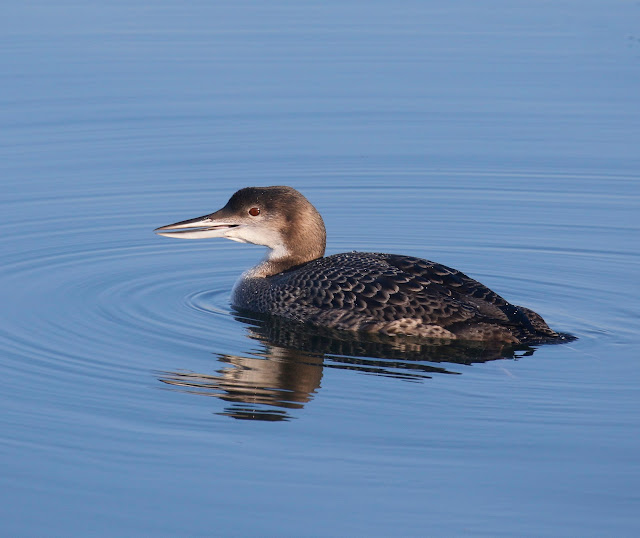 |
Thursday was one of those sunny, windless and cold winter's days which temporarily transforms the world into seeming an infinitely better place than it currently is and I made the most of it by spending a pleasant, sometimes frenetic afternoon watching the Pallas's Leaf Warbler at Abingdon with my good pal Clackers (see my previous post)
Friday brought weather much the same as Thursday, identical in fact and I decided to renew my acquaintance with Farmoor Reservoir, having been in Scotland since before Christmas. I planned to meet Phil, another good friend and with whom, a couple of times a week, I share a leisurely wander around the reservoir's concrete perimeter, chatting about anything and everything and indulging in a bit of light birding. After the intensity of yesterday, chasing around after the Pallas's Leaf Warbler it would provide the ideal antidote.
Following a coffee in the Waterside Cafe we made our way to the causeway. Walking up the causeway I could see the blue waters of the reservoir were absolutely flat calm, with not a breath of wind to stir them, the only ripples coming from the various wildfowl swimming on its mirror surface. Half way along we stopped to admire the long staying juvenile Great Northern Diver, which has made a winter home on the smaller basin that is Farmoor One. It has become quite the celebrity, being noticed and remarked upon by not only birders and photographers, both local and more distant but also the general public who now increasingly use the reservoir for recreation. The diver in turn has become used to and unafraid of the constant human traffic strolling along the causeway and sometimes stopping to admire it, with the consequence it will often feel confident enough to venture quite near to the shore.
Lately, judging by the numerous photos that have appeared on social media it has changed its feeding habits and now, instead of catching fish it seems to have transferred its preference to crayfish of which there are many in the reservoir. It is a good thing the diver has taken a liking to the crayfish as they are Signal Crayfish, foreign interlopers from America that were introduced to Britain in 1970. They are carriers of crayfish plague, fatal to our indigenous White clawed Crayfish, as well as being dominant over and breeding faster than our crayfish, all of which has resulted in our native crayfish becoming scarce and endangered. Quite how many crayfish lurk below the reservoir is unknown but a guess would say they are there in large numbers.
The diver looked superb in the winter sun and we watched as it floated on the still water, slowly turning on its own axis and making a regular and gentle growling call. almost as if something was stuck in its throat. I have never heard a Great Northern Diver make such a sound before and certainly not from any that have visited the reservoir over the years. Someone was concerned that it was not well but it ceased the calling after a few minutes and all appeared to be well
Then it began to dive and for a time appeared to be catching nothing but on its fourth or fifth dive it surfaced with a large crayfish which it held firmly in its formidable mandibles. The crayfish was not going to go quietly and put up some resistance but the diver gave it a thorough shaking and mauling with its bill to subdue it, sometimes so fiercely it lost its grip on the crayfish and dropped it in the water. However there was no escape for the crustacean as the diver submerged its head to retrieve it and give it yet another going over. Eventually the diver was satisfied the crayfish had given in to the inevitable and with a toss of its open bill swallowed it whole.
Such a substantial meal needed digesting and the diver floated idly on the water before indulging in some gentle preening, just a feather here and there needed placement before it was satisfied all was in order, which it signalled by rising to stand on end in the water and flapping its wings vigorously to shake everything into place and then settled back to float on the water, content.
Such a pleasant little cameo to welcome me back to Farmoor. It will never compete with Largo Bay in Fife with its miles of beaches, wading birds and seaducks, which is where we spent this Christmas and New Year but the diver brought some compensation.
I do hope the diver remains for a few more weeks yet.There is certainly no shortage of food if it wishes to maintain its shellfish diet. and being a juvenile it will most likely not breed in this its second year so there is no hurry to depart.
















No comments:
Post a Comment